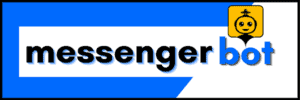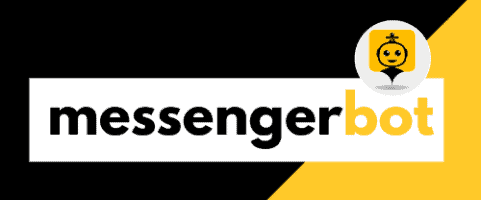在当今的数字环境中,在您的网站中实施聊天机器人已成为企业增强客户参与和简化运营的变革性策略。无论您是想集成一个简单的聊天机器人还是一个复杂的人工智能助手,将这一互动元素添加到您的在线存在中都能显著改善用户体验并提高转化率。本综合指南将引导您完成将聊天机器人嵌入网站的步骤,探索从使用HTML和Python到利用像ChatGPT这样的先进平台的各种实施方法。我们还将深入探讨与聊天机器人集成相关的成本、可用的免费选项以及优化您机器人性能的最佳实践。到本文结束时,您将拥有一个清晰的路线图,以设置与您的业务目标和技术要求相一致的聊天机器人。
聊天机器人的实施:概述
在当今的数字环境中,聊天机器人已成为企业增强客户参与和简化运营的重要工具。作为聊天机器人解决方案的领先提供商,我们Messenger Bot深知有效实施这些人工智能助手的重要性。让我们深入聊天机器人集成的世界,探索它如何改变您的网站。
您可以将聊天机器人集成到您的网站中吗?
当然可以!将聊天机器人集成到您的网站中不仅可行,而且越来越简单。随着人工智能技术的进步和用户友好平台的出现,将聊天机器人添加到您的网站比以往任何时候都更容易。无论您是经营小型企业还是管理大型企业,都有可以根据您的具体需求量身定制的聊天机器人解决方案。
集成聊天机器人的过程通常涉及选择合适的平台、设计您机器人的对话流程,然后将其嵌入到您网站的代码中。许多聊天机器人提供商,包括Messenger Bot,提供简单的集成方法,所需的技术专长很少。对于那些熟悉HTML的人, 设置您的第一个人工智能聊天机器人可以在不到10分钟内完成.
将聊天机器人添加到您网站的好处
在您的网站上实施聊天机器人可以为您的业务带来许多优势。以下是一些关键好处:
- 24/7 客户支持: 聊天机器人提供全天候的帮助,能够即时回答客户查询,即使在非营业时间也能如此。
- 改善用户体验: 通过提供快速响应和个性化互动,聊天机器人提升了您网站的整体用户体验。
- 成本效益: 自动化常规查询减少了客户服务团队的工作负担,使他们能够专注于更复杂的问题。
- 潜在客户生成: 聊天机器人可以吸引访客、筛选潜在客户,甚至启动销售流程,从而提高转化率。
- 数据收集: 通过对话,聊天机器人收集有关客户偏好和行为的宝贵见解。
- 可扩展性: 随着您的业务增长,聊天机器人可以处理越来越多的互动,而无需相应增加员工数量。
在Messenger Bot,我们亲眼见证了我们的 先进聊天机器人功能 已帮助各行各业的企业改善客户参与和运营效率。从电子商务到服务型企业,聊天机器人在现代公司的数字工具箱中被证明是不可或缺的资产。
在您考虑实施聊天机器人时,选择一个与您的业务目标和技术能力相一致的解决方案是很重要的。像 大脑舱人工智能 这样的平台提供复杂的人工智能驱动聊天机器人,可以根据从客户服务到潜在客户生成的广泛应用进行定制。
在下一部分中,我们将探讨开始聊天机器人实施的实际步骤,确保您能够利用这些好处为自己的网站服务。

开始聊天机器人实施
正如我们所看到的,在您的网站上实施聊天机器人可以显著增强客户参与和简化运营。现在,让我们深入了解启动您的聊天机器人的实际步骤。
我该如何在我的网站上启用聊天机器人?
在您的网站上启用聊天机器人是一个简单的过程,可以分解为几个关键步骤:
- 选择聊天机器人平台: 选择一个与您的业务需求相一致的平台。在Messenger Bot,我们提供一个用户友好的解决方案,可以与各种网站无缝集成。
- 设计您的聊天机器人: 创建您的聊天机器人的对话流程,包括问候、回应和决策树。
- 自定义外观: 调整聊天机器人的外观以匹配您品牌的美学。
- 一体化: 使用提供的代码片段将聊天机器人添加到您的网站。这通常涉及将一小段JavaScript粘贴到您网站的HTML中。
- 测试: 彻底测试您的聊天机器人,以确保其正常运行并提供有价值的互动。
- 启动和监控: 一旦满意,启动您的聊天机器人并持续监控其性能,以进行必要的调整。
对于那些对更高级解决方案感兴趣的人, Brain Pod AI的聊天助手 提供可以根据特定行业需求量身定制的复杂AI驱动功能。
选择适合您需求的聊天机器人平台
选择合适的聊天机器人平台对于成功实施至关重要。以下是一些需要考虑的因素:
- 易于使用: 寻找具有直观界面的平台,这些界面不需要广泛的编码知识。
- 定制选项: 确保该平台允许您根据品牌定制聊天机器人的外观和功能。
- 集成能力: 该平台应能与您现有的系统和网站轻松集成。
- AI和NLP能力: 先进的自然语言处理可以显著提高聊天机器人的理解能力和响应能力。
- 可扩展性: 选择一个能够随着您的业务需求增长的解决方案。
- 分析和报告: 强大的分析工具帮助您监控性能并进行数据驱动的改进。
- 支持和文档: 可靠的客户支持和全面的文档对于顺利实施和操作至关重要。
在Messenger Bot,我们以提供在所有这些领域表现卓越的平台而自豪。我们的 全面功能集 旨在满足各行业企业的多样化需求。
对于那些希望以最少编码实现聊天机器人的用户,像 Zendesk的Answer Bot 提供无代码解决方案,可以快速设置。然而,对于更定制化的解决方案,您可能需要考虑允许更深层次集成和定制的平台。
请记住,目标是选择一个不仅满足您当前需求的平台,还具有灵活性,以适应您的业务增长和聊天机器人需求的演变。通过仔细选择合适的平台并遵循最佳实施实践,您可以创建一个显著增强您网站功能和用户体验的聊天机器人。
在下一部分中,我们将探讨一些高级聊天机器人集成选项,包括如何利用尖端AI技术创造更复杂的聊天机器人体验。
高级聊天机器人集成选项
随着我们深入探讨聊天机器人的实施,探索更复杂的集成选项至关重要,这些选项可以将您网站的功能提升到一个新的水平。让我们看看一些利用尖端AI技术的高级可能性。
您可以将ChatGPT集成到您的网站吗?
当然可以!将ChatGPT集成到您的网站不仅是可能的,而且可以显著增强您的聊天机器人的能力。以下是一个简化的指南,帮助您入门:
- API访问: 首先,通过注册账户并申请API凭证,从OpenAI获取API访问权限。
- 集成方法: 选择使用JavaScript进行直接API调用或使用Node.js或Python等语言进行服务器端集成。
- 后端设置: 配置您的服务器以安全处理API请求,实施速率限制和错误处理。
- 用户界面: 设计一个直观的聊天窗口或输入字段以供用户查询,并设置响应显示区域。
- API实施: 使用OpenAI的SDK有效构建API请求并处理响应。
- 优化: 实施缓存机制,并考虑流式响应以实现实时交互。
- 测试: 在各种浏览器和设备上进行全面测试,以确保功能顺畅。
对于那些寻找更简单解决方案的用户, 我们的平台在 Messenger Bot 提供无缝集成选项,可以在无需大量编码的情况下融入先进的人工智能功能。
值得注意的是,虽然 ChatGPT 集成可以提供强大的对话能力,但至关重要的是 优化您的聊天机器人以适应您的特定用例 以确保它与您的品牌声音和客户需求保持一致。
在网站上免费实施聊天机器人:开源解决方案
对于希望以预算实施聊天机器人的企业,有几种开源解决方案可用,可以提供强大的功能而无需成本:
- Botpress: 一个开源的对话式人工智能平台,允许复杂的对话管理和自然语言理解。
- 拉萨: 一个强大的框架,用于构建具有机器学习能力的上下文 AI 助手和聊天机器人。
- 聊天机器人: 一个 Python 库,使生成对用户输入的自动响应变得简单。
- 对话流: 虽然不是完全开源,谷歌的 Dialogflow 提供了一个具有令人印象深刻的 NLP 能力的免费层。
这些开源选项对于希望完全控制聊天机器人功能并且对一定程度的编码感到舒适的开发人员来说是极好的。然而,与托管解决方案相比,它们通常需要更多的技术专长来实施和维护。
在 Messenger Bot,我们理解并非每个人都有资源进行广泛的开发。这就是为什么我们提供一个 免费试用 我们的平台,让您在做出承诺之前体验专业管理的聊天机器人解决方案的好处。
在考虑免费选项时,重要的是权衡初始成本节省与长期维护之间的权衡。开源解决方案可能需要持续的开发和更新,以跟上不断变化的客户期望和安全要求。
对于那些有兴趣进一步探索 AI 驱动的解决方案的人, Brain Pod AI的聊天助手 提供可以根据各个行业定制的高级功能,提供了开源灵活性和托管解决方案便利性之间的中间地带。
最终,选择免费的开源解决方案和像我们这样的托管平台之间的选择取决于您的具体需求、技术能力和客户参与的长期目标。我们在这里帮助您导航这些选项,并找到最适合您网站聊天机器人实施的方案。
聊天机器人实施的技术方面
随着我们深入聊天机器人实施的世界,了解使这些 AI 驱动的助手在网站上无缝运行的技术方面至关重要。让我们探索聊天机器人集成的细节,重点关注 HTML 实施和基于 Python 的解决方案。
如何在 HTML 中实施聊天机器人?
在 HTML 中实施聊天机器人是为您的网站添加互动功能的好方法。以下是一个逐步指南,帮助您入门:
- 创建 HTML 结构: 首先设计一个聊天界面,包含消息容器和输入字段。使用语义 HTML5 元素以提高可访问性,并包含响应式设计的元标签。
- 使用 CSS 进行样式设置: 使用 flexbox 或 grid 应用响应式布局。为用户和机器人消息设计聊天气泡,并实现消息过渡的平滑动画。
- 添加 JavaScript 功能: 设置用户输入的事件监听器,并实现自然语言处理 (NLP) 库,如 compromise.js。创建响应生成逻辑或与外部 API 集成。
- 后端集成: 使用 WebSockets 进行实时通信。使用 Node.js 或 Python 实现服务器端逻辑,并将对话历史存储在 MongoDB 等数据库中。
- 通过 AI 增强: 使用像 TensorFlow.js 这样的库集成机器学习模型。实现意图识别和实体提取,以便提供更智能的响应。
在 通讯机器人, 我们通过提供一个现成的聊天机器人解决方案简化了这个过程,该解决方案可以轻松集成到您的 HTML 结构中。我们的平台处理复杂的后端流程,让您可以专注于自定义聊天界面,以匹配您的品牌。
对于那些希望探索更高级的 AI 实现, Brain Pod AI的聊天助手 提供复杂的自然语言处理能力,可以无缝集成到您网站的 HTML 结构中。
如何使用Python为网站创建聊天机器人
Python 是创建聊天机器人的强大语言,因为它拥有丰富的库和框架。以下是如何使用 Python 为您的网站创建聊天机器人的步骤:
- 选择一个框架: 选择一个 Python Web 框架,如 Flask 或 Django,以处理 HTTP 请求和响应。
- 实施 NLP: 使用自然语言处理库,如 NLTK 或 spaCy,处理和理解用户输入。
- 创建知识库: 开发一个数据库或 JSON 文件,以存储预定义的响应和对话流程。
- 设计聊天逻辑: 编写 Python 函数来处理用户查询,处理它们并生成适当的响应。
- 与前端集成: 使用 AJAX 或 WebSockets 将您的 Python 后端与 HTML/JavaScript 前端连接。
- 部署: 将您的 Python 应用程序托管在支持 Python 执行的服务器上,如 Heroku 或 PythonAnywhere。
虽然使用 Python 从头创建聊天机器人是有益的,但这需要大量的时间和专业知识。在 通讯机器人, 我们提供一种结合基于 Python 的 NLP 功能与易于使用的界面的解决方案,让您能够实现复杂的聊天机器人功能,而无需 extensive coding。
对于那些有兴趣进一步探索 AI 驱动的聊天机器人的人, Brain Pod AI 的人工智能作家 可以成为生成动态对话内容的优秀资源,这些内容可以集成到您的基于 Python 的聊天机器人中。
请记住,无论您选择使用 HTML、Python 还是两者的组合来实现聊天机器人,关键是创造一个无缝且引人入胜的用户体验。我们的 教程 可以指导您优化聊天机器人以实现最大效果,确保它不仅在技术上运行良好,还能为您的网站访客提供真正的价值。

聊天机器人实施的成本考虑
在深入探讨聊天机器人实施的财务方面时,了解影响成本的各种因素以及适合不同预算和业务需求的可用选项至关重要。让我们探索定价格局,并考虑一些具有成本效益的解决方案。
将聊天机器人添加到您的网站需要多少费用?
将聊天机器人添加到您的网站的成本可能会有很大差异,通常范围从 $50 到超过 $1,000 每月。以下是定价层级和影响因素的细分:
- 基础聊天机器人:$50-$100/月
- 单个机器人部署
- 有限的定制选项
- 基本分析和报告
- 中档解决方案:$100-$500/月
- 多个机器人部署
- 高级自定义功能
- 与CRM系统的集成
- 增强的分析和用户细分
- 企业级聊天机器人:$500-$1,000+/月
- 人工智能驱动的对话能力
- 多语言支持
- 高级安全功能
- 专属支持和培训
多个因素会影响聊天机器人的成本,包括对话的复杂性、集成需求、交互量、定制需求和行业特定功能。在为您的聊天机器人实施预算时,考虑这些因素非常重要。
在 通讯机器人, 我们提供灵活的定价选项,以适应各种规模的企业。我们的计划旨在在可负担性和高级功能之间取得平衡,确保您获得投资的最佳价值。
对于那些寻求具有先进人工智能能力的企业级解决方案的人, Brain Pod AI的聊天助手 提供可以根据复杂业务需求量身定制的复杂功能。
网站的免费聊天机器人选项和限制
虽然付费解决方案提供更多高级功能,但网站上也有免费的聊天机器人选项。然而,了解它们的限制是很重要的:
- 开源平台: 像RASA和Botpress这样的平台提供免费的开源聊天机器人框架。虽然这些具有成本效益,但需要技术专业知识来设置和维护。
- 有限的免费层: 许多聊天机器人提供商,包括 通讯机器人, 提供免费试用或有限的免费计划。这些非常适合测试功能,但可能对功能或对话量有限制。
- DIY Chatbots: 对于那些具备编码技能的人来说,使用像Dialogflow或Microsoft Bot Framework这样的平台创建基本聊天机器人可以是免费的,但耗时。
- 社交媒体聊天机器人: 像Facebook Messenger这样的平台允许企业免费创建简单的聊天机器人,但它们仅限于该特定平台。
免费聊天机器人的限制通常包括:
- 每月对话数量受限
- 有限的定制选项
- 缺乏像人工智能驱动的响应或集成等高级功能
- 聊天机器人提供商在您的小部件上的潜在品牌标识
- 分析和报告能力有限
虽然免费选项可以作为一个良好的起点,但随着您的业务增长,它们可能无法很好地扩展。我们的 功能丰富的计划 在Messenger Bot中旨在与您的业务共同成长,提供免费的解决方案无法匹敌的高级能力。
对于希望在聊天机器人中利用更先进的人工智能而不承担定制开发高成本的企业, Brain Pod AI 的人工智能作家 可以成为生成动态对话内容的优秀资源,这些内容可以集成到各种聊天机器人平台中。
请记住,虽然成本是一个重要因素,但选择与您的业务目标一致并为您的客户提供价值的聊天机器人解决方案至关重要。我们的 教程 可以指导您选择和实施适合您需求的聊天机器人解决方案,确保您充分利用您的投资。
逐步指南:如何添加聊天机器人
在您的网站上实施聊天机器人可以显著增强用户参与度并简化客户支持。让我们深入了解将机器人添加到您网站的过程,重点关注使用HTML的实用方法。
我如何将机器人添加到网站?
将聊天机器人添加到您的网站涉及几个关键步骤:
- 选择一个机器人平台: 根据您的需求和技术专长选择合适的平台,如 通讯机器人, Dialogflow 或 Chatfuel。
- 设计您的机器人: 定义其目的、对话流程和对用户查询的响应。
- 开发机器人: 使用所选平台的工具创建和训练您的机器人。
- 启用网站集成: 大多数平台提供小部件或插件,以便轻松集成到网站中。
- 生成机器人代码: 从您的机器人平台获取必要的JavaScript代码。
- 将代码添加到您的网站: 将生成的代码插入到您网站的HTML中,通常是在关闭标签之前 </body> 标签。
- 自定义外观: 调整机器人的设计以匹配您网站的美学。
- 彻底测试: 确保机器人在所有页面和设备上正常运行。
- 监控和优化: 定期分析机器人的性能和用户互动,以提高其有效性。
在 通讯机器人, 我们提供用户友好的界面,简化此过程,使您能够以最少的技术知识设置和自定义聊天机器人。我们的 教程 提供逐步指导,以确保顺利实施。
如何使用HTML在网站中添加聊天机器人:一种实用方法
对于那些熟悉HTML的人,这里有一种将聊天机器人添加到您网站的实用方法:
- 获取聊天机器人脚本: 在像Messenger Bot这样的平台上设置好您的机器人后,您将收到一个唯一的脚本。
- 找到您网站的HTML: 访问您网站的HTML文件或您希望聊天机器人出现的部分。
- 插入脚本: 将提供的脚本放在您的HTML文件的关闭标签之前。 </body> 例如:
<body> <!-- Your website content --> <script src="https://messengerbot.app/widget.js" id="mb-widget" data-bot-id="YOUR_BOT_ID"></script> </body> - 自定义小部件: 许多平台允许您使用 HTML 和 CSS 自定义聊天机器人小部件的外观。例如:
#mb-widget { position: fixed; bottom: 20px; right: 20px; z-index: 9999; } - 测试实施情况: 保存您的更改并在您的网站上测试聊天机器人,以确保其正常运行。
对于那些希望在聊天机器人中利用更高级 AI 功能的人, Brain Pod AI的聊天助手 提供复杂的功能,可以集成到各种网站平台中,增强您机器人的对话能力。
请记住,虽然使用 HTML 实施聊天机器人很简单,但确保您的机器人为用户提供价值至关重要。定期更新您机器人的响应和功能,以保持其相关性和实用性。我们的 免费试用 Messenger Bot 允许您尝试不同的聊天机器人设置,并找到最适合您网站的选项。
通过遵循这些步骤并利用正确的工具,您可以成功地将聊天机器人添加到您的网站,增强用户参与度并提供高效的客户支持。无论您是使用无代码解决方案还是通过 HTML 实施,关键是创建一个与您的品牌一致并满足用户需求的聊天机器人。
优化您的聊天机器人以实现最大效果
在 Messenger Bot,我们理解创建一个真正增强您网站用户体验的有效聊天机器人的重要性。优化您的聊天机器人对于最大化其影响并确保其满足您的业务目标至关重要。让我们探讨如何创建一个利用正确 AI 方法的聊天机器人,以及如何利用像 ChatGPT 这样的先进 AI 的力量。
您需要为您的网站创建一个聊天机器人,能够回答您将使用哪种 AI 方法
在为您的网站创建聊天机器人时,选择正确的 AI 方法对于其有效性至关重要。以下是您可能考虑的一些 AI 方法:
- 基于规则的 AI: 这种方法使用预定义的规则和决策树。它适合简单的交互,并可以使用我们的 基本聊天机器人功能.
- 机器学习(ML): 机器学习算法允许您的聊天机器人从数据中学习并随着时间的推移不断改进。这种方法非常适合处理更复杂的查询,并可以通过先进的平台进行集成。
- 自然语言处理(NLP): 自然语言处理使您的聊天机器人能够更自然地理解和响应人类语言。我们的 教程 涵盖如何在您的聊天机器人中实现自然语言处理,以便进行更复杂的交互。
- 深度学习: 这种先进的 AI 技术使用神经网络分层处理信息,从而实现更细致的理解和响应。
在 Messenger Bot,我们推荐一种混合方法,将基于规则的逻辑与机器学习和自然语言处理结合起来,以应对更复杂的交互。这种平衡的方法确保您的聊天机器人能够高效处理各种客户咨询,同时不断提高其性能。
如何使用 ChatGPT 创建聊天机器人:利用先进的 AI
使用 ChatGPT 创建聊天机器人可以显著增强您网站的对话能力。以下是利用这一先进 AI 的逐步指南:
- 访问 ChatGPT API: 通过 OpenAI 或提供 ChatGPT 集成的服务提供商注册以访问 ChatGPT API。
- 定义您的用例: 清晰地概述您希望聊天机器人处理的具体任务和交互。
- 设计对话流程: 绘制用户可能采取的典型对话路径。
- 与您的平台集成: 使用我们的 集成指南 将 ChatGPT 与您的 Messenger Bot 设置连接。
- 训练模型: 提供示例对话和有关您业务的具体信息,以微调ChatGPT模型.
- 实施安全措施: 设置过滤器和检查,以确保聊天机器人的响应与您的品牌声音和价值观一致.
- 广泛测试: 进行全面测试,以优化聊天机器人的响应并确保准确性.
- 监控和迭代: 定期审查聊天机器人互动和用户反馈,以持续改进.
虽然ChatGPT提供强大的功能,但需要注意的是,它需要谨慎的实施和监督。在Messenger Bot,我们提供工具和支持,帮助您有效地集成和管理网站上的高级AI聊天机器人.
对于那些希望探索更复杂的AI解决方案的人, Brain Pod AI的聊天助手 提供尖端功能,可以与各种平台无缝集成,包括网站聊天机器人.
请记住,成功实施聊天机器人的关键在于平衡先进的AI能力与实用的以用户为中心的设计。无论您是使用我们的平台还是与ChatGPT集成,请确保您的聊天机器人通过快速准确地满足用户需求,为用户提供真正的价值.
通过遵循这些指导方针并利用正确的AI方法,您可以创建一个不仅能回答问题,还能增强整体用户体验、推动参与度并支持您的业务目标的聊天机器人。不要忘记利用我们的 免费试用 来尝试不同的AI方法,找到最适合您网站的解决方案.





